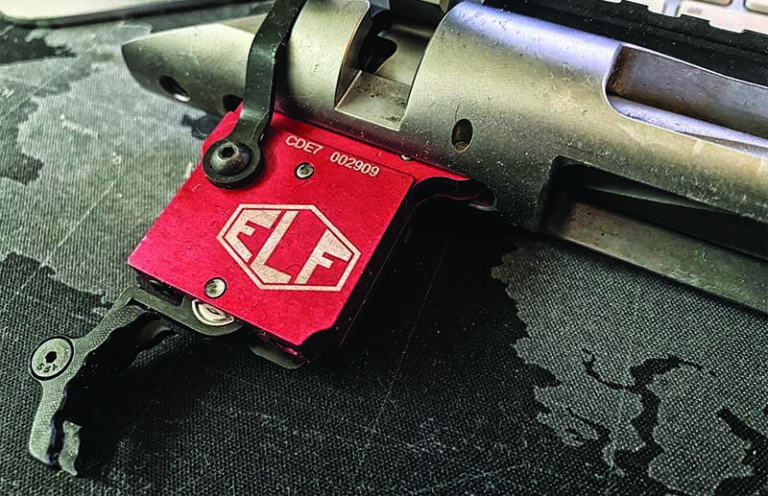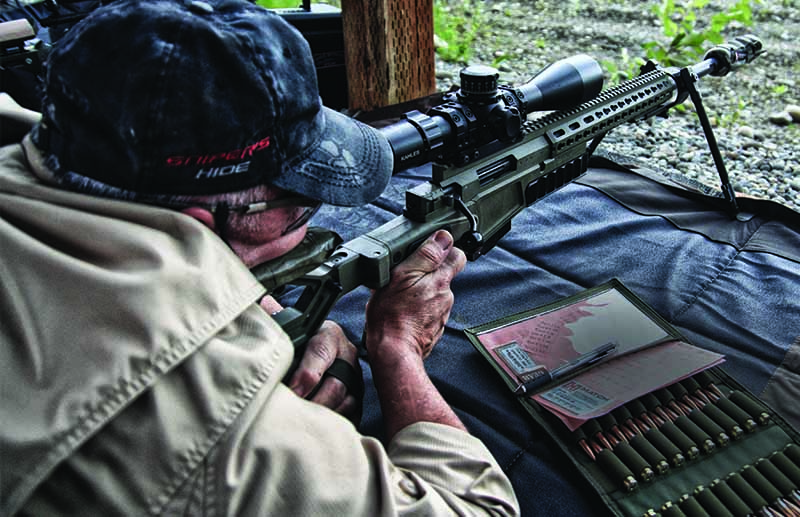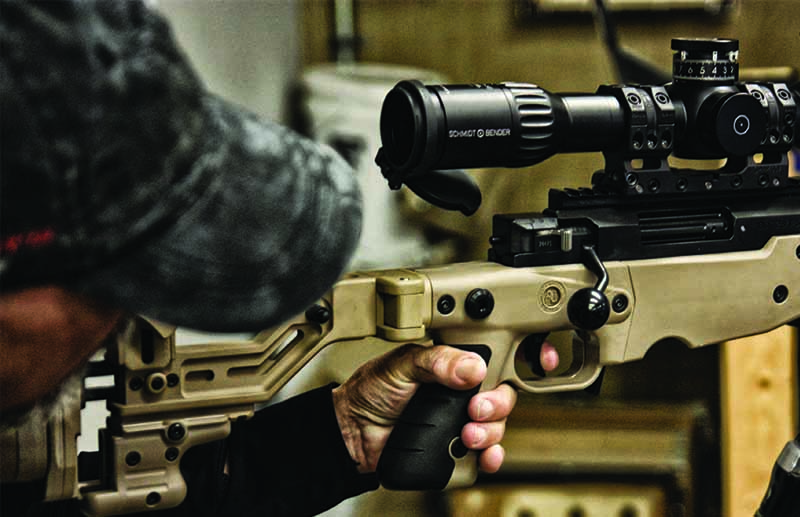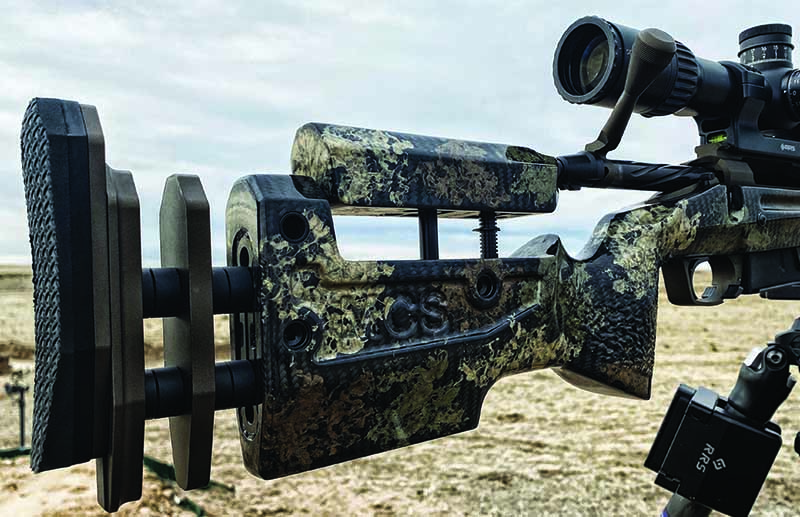
No need to go top shelf out of the gates. Invest in the right precision rifle upgrades you can take a base model and go the distance.
What Are The Main Precision Rifle Upgrades You Should Focus On:
I look at my rifles like a 350 Chevy—tons of aftermarket parts and the ability to modify it to my heart’s content. I have no problem replacing, modifying and adjusting the weapon system to meet my personal needs. After all, everyone is different; our needs change, so adjusting the rifle to fit the mission is essential in my mind.

I have a lot of videos on YouTube that demonstrate this very fact. If you look at the comment section, you’d think nobody ever burned out a barrel or decided to change a factory stock. Sure, I tend to modify the rifles all at once versus over time. But I have the luxury of access (getting precision rifle upgrades for me is very easy). I’m not saying you have to change everything all at once— heavens, no. You can make any amount of changes over time, so let’s look at the top-line elements that don’t require a gunsmith.
Trigger
Factory triggers can be an obstacle. They often have limited adjustment and are set very heavy for liability reasons. Getting an aftermarket trigger is a quick and straightforward way to improve your rifle accuracy. Trigger control is a fundamental of marksmanship. Having a crisp, no-influence break is vital to proper shot execution. Better triggers give you more adjustability; more adjustments mean it suits the shooter better.
I look at rifle set up the same way I look at my car. I see the stocks as the car seats and the scope as my mirrors. The more adjustability in those I have, the more comfort on those trips.
Stocks
We save money by purchasing factory rifles. Those factory rifles often ship with very basic stocks. The stock design favored by companies focuses more on hunting and shooting standing. Very few of us want to shoot unsupported standing anymore. We want to maximize accuracy, so we need to support the rifle. For many, that means a bench; others tend to go prone. The standing stock is a compromise in these positions.
More adjustability means more comfort. I want to fit the stock to the shooter’s body. I want to look at my mission to maximize those adjustments. Will I be shooting positional? I might want to shorten my length of pull. Is this designed for F Class? Maybe I need a flat bottom.
I set the stock up before mounting my scope with me in position. I choose stocks with tool-free adjustments so I can manage them on the fly.

Bedding is no longer a top-line consideration, thanks to internal chassis systems and computer fitting. You can buy a well-made barreled action from a famous gunsmith and drop it in a stock at home. This saves a ton of time and money.
Do your homework; study the features and understand how those features add or subtract from your mission.
Bipods
I know it’ll sound like a broken record here, but bipods matter. Don’t look at them as an afterthought. They control a lot; bipods adjust the system for the shooter. If you have a pain in your neck, odds are your bipod is too low. If you’re canting the rifle, a proper locking bipod will stop that action from taking place. We have different levels of cost and features, because it matters.
Choose the bipod based on the intended use. If you’re hunting in the thick brush, a bipod is a secondary consideration. The prone shot is the rare shot, so have something light just in case it will work.
But consider accuracy. We want a bipod large enough to support the rifle system, broad enough in its stance to give us lateral stability, and finally, a locking feature to prevent the rifle from canting.
The better the bipod, the easier it is to be stable and dependable behind the rifle. It focuses our effort on trigger control and sight picture because the negative consequences of a loose, poorly adjusted bipod are gone.
When it comes to shot-to-shot accuracy, the follow-up shot is critical. If the bipod doesn’t support the recoil pulse in a straight line, you cannot have consistency behind the rifle.
Barrels
This precision rifle upgrade can require a gunsmith to change. That said, we’re in the 2020s, and much of that has changed. You can buy pre-fit barrels, letting you swap both barrels and calibers at home.

I admit it; my go-to rifles are switch barrel capable. I favor rifle systems that let me change barrels on the line in seconds. I don’t need a vice or a torque wrench; I can do it all with a 4mm Allen wrench.
Many modern rifles are moving to user-swappable systems. I see barrels the same way I look at the tires on my car. Tires are expendable and so are barrels.
A lot of new shooters want one caliber to last a lifetime. That was the mindset behind the 308. The odds of average Joe shooting 10,000 rounds are pretty rare. Today, with our 6.5s, burning a barrel out is going to happen closer to 3,000 rounds. You’ll change barrels at some point.
In terms of an upgrade path, I recommend new shooters fire 2,500 rounds from your 6.5 Creedmoor and then upgrade that factory barrel. That’s plenty of rounds to learn the caliber and few enough to know you’ll have to upgrade.
I’ve changed tires at 7,000 miles, because I didn’t like the ride. They weren’t cheap and I hated doing it, but new tires gave me a more comfortable ride and improved my mileage. Barrels are the heart of the system. They control accuracy beyond anything an action can do. The action is just a delivery device; the barrel controls the results.

Aftermarket barrels are everywhere; a decent gunsmith using modern equipment, who isn’t months in demand, should be able to spin you up and mount a new one in less than 30 days. It’s a simple process. The days of waiting months or even years are over.
Time is Your Friend
Nobody is saying to follow my YouTube lead and swap out every part imaginable. You can change small things over time as money becomes available. I have a higher degree of access so that I can swap the kitchen sink without any penalty. I recommend you pick and choose your battles, but never fear replacing something that’s falling short.
Base factory rifles are just that: a base. You can build off that base at any point. Different models have different availability to aftermarket parts, so keep that in mind when choosing a brand. Fast, flat calibers put more stress on the base system. Aftermarket parts fix the shortcomings and give the end-user greater flexibility.
In this off-season, explore the precision rifle upgrade options available to you.
Editor's Note: This article originally appeared in the January 2021 issue of Gun Digest the Magazine.
Zero In On Precision Rifles:
- Top 17 Affordable Precision Rifles
- How To Buy Or Build A Custom Precision Rifle
- Precision Rifle Training: The Edge You Need For Hunting Season
- Gun Review: Ruger Precision Rifle In 6mm Creedmoor

Next Step: Get your FREE Printable Target Pack
Enhance your shooting precision with our 62 MOA Targets, perfect for rifles and handguns. Crafted in collaboration with Storm Tactical for accuracy and versatility.
Subscribe to the Gun Digest email newsletter and get your downloadable target pack sent straight to your inbox. Stay updated with the latest firearms info in the industry.

![Best Concealed Carry Guns In 2025 [Field Tested] Wilson Combat EDC X9S 1](https://gundigest.com/wp-content/uploads/Wilson-Combat-EDC-X9S-1-324x160.jpg)


![Best 9mm Carbine: Affordable PCCs [Tested] Ruger Carbine Shooting](https://gundigest.com/wp-content/uploads/Ruger-Carbine-Shooting-100x70.jpg)
![Best AR-15: Top Options Available Today [Field Tested] Harrington and Richardson PSA XM177E2 feature](https://gundigest.com/wp-content/uploads/Harrington-and-Richardson-PSA-XM177E2-feature-100x70.jpg)
